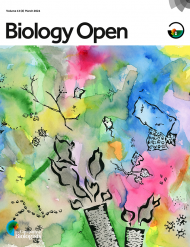30 May 2018
By Prof. Genoveva F. Esteban, Bournemouth University, UK

This is the story of a journey that started a few years back with the finding of a rare community of single-celled organisms in a small and isolated pond in a Dorset nature reserve. This microbial community was unusual in that the majority of these unicellular organisms were protozoa (microbes that feed on other microbes) harbouring other microscopic life inside them. Particularly interesting were those that harboured microscopic algae. Furthermore, most of the species had only been reported from one other location in the world – Germany!
Microscopic algae are plants and thus carry out photosynthesis. Interestingly, the protozoa that harbour the endosymbiotic algae benefit from their photosynthesis in two ways. The first is as a nutritional source by taking up the carbohydrates produced. This is not new as it has long been known that the majority of protozoa with endosymbiotic algae benefit from such a nutritional boost. However, this rare community of protozoa in the Dorset pond led us to discover that some protozoa did not use the photosynthetic nutritional rewards, but rather the oxygen produced as the end product of algal photosynthesis. As these protozoa with endosymbiotic algae are found in highly-productive ponds where oxygen levels are depleted, having an association with an oxygen-producing machine seems the perfect arrangement. The rare ciliated protozoon Loxodes rostrum (pictured) had previously only been found in Germany and the Dorset pond, and is unusual in that it harbours several different species of microscopic algae (most ciliate–algae associations are with one species only of the genus Chlorella). Unfortunately, the pond in Dorset dried out before we could finish our fascinating investigations on this unique species.
Fast forward a few years and I was invited to the Workshop ‘Symbiosis in the Microbial World: from Ecology to Genome Evolution’ in November 2017, organised by The Company of Biologists on the impressive grounds of Wiston House (West Sussex). The site has an old and productive pond with ample overhanging vegetation – just like the pond in Dorset! Would the Wiston House pond have Loxodes rostrum? We collected samples for the Workshop’s microscope session that I was running, and voila! – there it was, adding a new location to its biogeographic map. This finding allowed us to finalise our investigations on this ciliate species, including looking at its DNA sequence, in collaboration with Prof Martin Embley and Dr Kacper Sendra at the Institute for Cell and Molecular Biosciences at Newcastle University.
We thank The Company of Biologists, particularly Nicky Le Blond, and to the Wiston House estate for allowing access to the pond.








You must be logged in to post a comment.